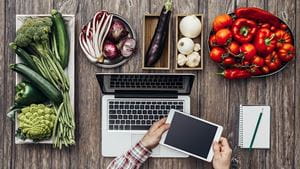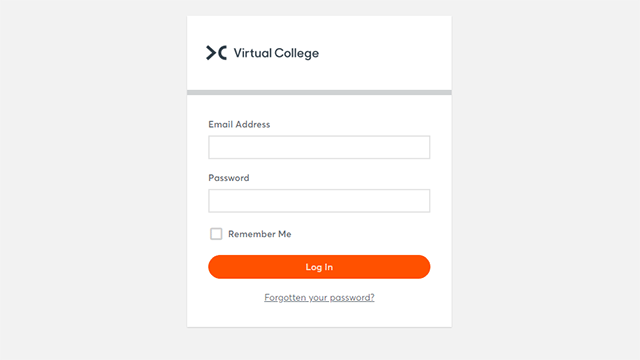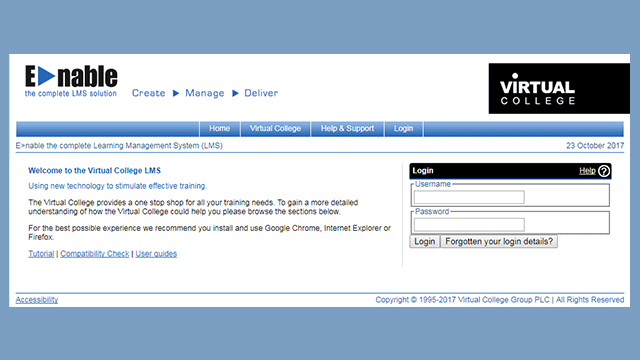Where to Store Food in the Fridge
Whether you work in a food establishment or are just organising your ingredients at home, knowing how to store food in a fridge correctly is very important. Not only does this ensure that food products remain safe to eat, but the proper organisation of a fridge also means that the food kept in there lasts for longer, reducing food waste and ensuring that you get the most out of your groceries.
Following food storage guidelines is particularly important for businesses that serve food to customers, as failure to store ingredients correctly could lead to health and safety violations and put your customers at risk of food poisoning. When there are lots of people working in a kitchen it can be hard to stay organised and take the time to keep fridges properly stocked, but it’s a key part of ensuring that you’re complying with relevant health and safety legislation and protecting a business from poor reviews or hygiene ratings.
In this article, we explain the proper way of storing food safely so that you know the best way to organise all your ingredients and keep everything fresh for as long as possible.
How to Store Food in a Fridge
Whilst you can usually throw anything into any drawer in a freezer, correct fridge storage is more of a complicated issue. Not only are there slight temperature differences at different levels, but refrigerated food doesn’t last as long and is much more likely to contaminate other products around it if left for too long.
To avoid contamination and keep your fridge operating at optimum performance, it’s recommended that you follow the below guidance for recommended storage of food within the fridge. This is particularly important in industrial fridges used in kitchens for restaurants and cafes where space needs to be used as efficiently as possible and contamination could lead to large amounts of stock getting thrown away.
Top Shelf
The top shelf of a fridge should always be used to store food that is ready to eat. This includes dairy products like yoghurt and cheese and any pre-prepared food or leftovers that don’t need to be reheated before serving.
Ready to eat food is stored at the top of the fridge so that it will not be contaminated by any other ingredients that may drip down onto it. Because this food won’t be cooked before it is eaten, it poses the biggest risk if it becomes contaminated as there is no way that bacteria could get killed before it is consumed.
Anything stored on the top shelf should be kept inside a sealed container, especially if it has already been opened and partially used.
Middle Shelves
You should keep similar food on the middle shelves of the fridge as you do on the top shelf. Things like butter, refrigerated desserts, tubs of sauce or dressing and deli meats should be kept in the middle of the fridge, again ensuring that they are all properly sealed when they go in.
As a general rule, food that has been opened should go on the top shelf, whilst ready to eat food that is still sealed can be stored on the level below this. When dealing with storing food safely on a large scale, if you are restocking a fridge you should remember to add new items to the back of a shelf and bring older items to the front so that they are used first and don’t end up being forgotten and going off.
Correct fridge storage guidance also recommends that hot-held food is stored on the middle shelves of a refrigerator. Hot-held food is anything that has already been prepared and is going to be heated and then kept at a high temperature as it is served, and it’s important to only reheat these products once and not put them back into a fridge if they have already been heated up again.
Bottom Shelf
One of the most important things to remember when learning how to correctly store food in a fridge is that the bottom shelf should be used for ingredients that have the highest cooking temperature. This is predominantly raw meat and fish, which should also be kept at the bottom of a fridge because this tends to be the coldest part which reduces the risk of any products going off because of warm temperatures.
You are also strongly recommended to keep raw meat and fish at the bottom of a fridge because these products can sometimes produce liquids that could drip down onto other ingredients if they were stored below the raw products. This would potentially lead to numerous cases of contamination that carry a high risk of food poisoning, which is also why food storage guidelines suggest that you keep all raw meat and fish in carefully sealed bags or containers.
Drawers
Whilst not a feature of all kinds of refrigerators, many models have drawers at the bottom that offer an alternate method of storage. If your fridge has lower drawers, you may be left wondering what products should be kept here to adhere to correct fridge storage guidance.
The general recommendation is that fridge drawers should be used to store fresh fruit and vegetables. These should be kept in their original packaging to prevent contamination, or should be washed if they are loose before putting them in the drawers. Remember to regularly empty and clean your fridge drawers so that you avoid any bacteria building up and contaminating new foods that get put in the fridge.
Some people choose to use their fridge drawers to store raw meat, particularly if they only have a small quantity compared to all their fruit and veg. This is fine for small fridges in domestic settings, but storing raw meat on the bottom shelf is a better idea for large fridges in commercial kitchen environments.
Door Shelves
Industrial fridges don’t tend to have door shelves, but many models do as a way of offering more storage space. The shelves on a fridge door are the warmest part because of the frequency that it gets opened, which means that you shouldn’t store anything here that needs to be kept at the same low temperature to remain safe to eat.
You should store products that have natural preservatives in them in a fridge door, as these are much less likely to be affected by changing temperatures. Items like juice, jams and condiments are ideal candidates, along with products that you are just keeping cool for a short time or don’t actually need to be refrigerated.
Storing Food Safely
Here’s a simple summary of the best way to store each kind of food when you’re organising a fridge.
Cooked Meat and Fish
Cooked meat and fish should always be stored in a sealed container and only be put in the fridge after it has totally cooled down to room temperature. These products need to be kept on the top shelves of a fridge and should only be stored for up to three days, after which they should be discarded. Remember to always fully heat cooked meat before consuming it again to kill any harmful bacteria.
Cooked Leftovers
Similarly to cooked meat, any kind of leftovers that have already been cooked should be cooled to room temperature and stored in an airtight container on the top shelves of a fridge. Leftovers should be consumed within three days and again need to be reheated until they are piping hot before serving.
Condiments
The majority of condiments that haven’t been opened can be stored at room temperature in a cupboard, but once they have been opened should be stored in a fridge. Shelves in the door are ideal for this kind of item, but otherwise you should store open condiments at the top of a fridge.
Dairy
Dairy products are ready to eat, which means that they are best stored at the top of a fridge. Different items can be kept open for different amounts of time, so you should always check the storage instructions on things like butter, milk and cheese to see when the manufacturer recommends you should consume them.
Deli Meat
Meat that is ready to eat should be stored right at the top of the fridge, particularly if the packaging has already been opened. In these instances, make sure that the meat is kept in a sealed bag or container to keep it fresh for up to three days.
Eggs
The best way to store eggs is to keep them at a constant temperature, which is why putting eggs in the fridge is one of the best ways to keep them fresh for as long as possible. You can keep them in the middle of a fridge, and it is recommended to store them near the back so that they are less affected by fluctuating temperatures when the door opens and closes.
Fruit
Many fresh fruits last for longer and taste better when you store them in the fridge, particularly in the summer months. If your fridge has drawers then keeping fruit separate from other ingredients in these drawers is the best idea, ensuring that any pre-prepared fruits is stored in airtight containers and that everything is washed before it gets put away.
Fresh Herbs
If you use fresh herbs then one of the best ways to help them last as long as possible is to keep them in the fridge. Wrap the herbs in a damp paper towel and keep them in the middle of the fridge, and try to use them up in 2-3 days before they start to go off.
Juice
Fresh and UHT juice should be stored in the fridge, particularly after it has been opened. If you have shelves in the fridge door then this is an ideal place to keep juice bottles and cartons, particularly if they are tall and difficult to fit on the shelves inside the fridge.
Raw Meat and Fish
Raw meat and fish should always be stored at the bottom of the fridge with no other ingredients to avoid contamination and any liquid from these products dripping down onto lower shelves. Keep raw meat and fish in their original packaging whilst in the fridge, or keep them sealed in a bag or container to prevent cross-contamination. Try to cook raw meat as soon as possible, and never store it in the fridge for more than three days.
Vegetables
Fresh, raw vegetables should be kept in the drawers at the bottom of a fridge if possible to keep them separate from all other ingredients. It’s recommended that you wash vegetables before putting them in the fridge and also that you keep them in their original sealed packaging until they are used.
FAQs
Where should raw meat be stored in a refrigerator?
The recommended place to store raw meat in a fridge is the bottom shelf. Ideally, it should be stored in a sealed container or plastic bag so that it won’t contaminate any of the other ingredients in the fridge and ensure that all the food is safe to eat. You should try not to store any other products on the same shelf as raw meat if possible for the same reason.
How long can you store cooked food in the fridge?
The general recommendation for storing cooked food is that it shouldn't be kept in the fridge for more than three to four days. Cooked food should also always be properly cooled down before putting it in the fridge and stored in an airtight container to ensure that it stays fresh for as long as possible.
Should raw food be stored below cooked?
As a general rule, raw food should always be stored below everything else in the fridge, so cooked food should be kept above it if you have both in your fridge. This is mainly to prevent the raw food, meat in particular, from dripping down onto any other ingredient, which could cause food poisoning.
Summary
Learning how to store food in your fridge might seem like a menial task, but it can make a massive difference to the quality of your ingredients and how long they last. If you work in an environment where food is manufactured, handled, prepared and served, storing food safely is essential in ensuring that your customers aren’t at risk from food poisoning and that your business complies with relevant food safety legislation.
If you’d like to learn more about health and safety in the kitchen, we cover this topic and more in our ‘Level 2 Food Safety & Hygiene for Catering’ which is RoSPA assured.
























































